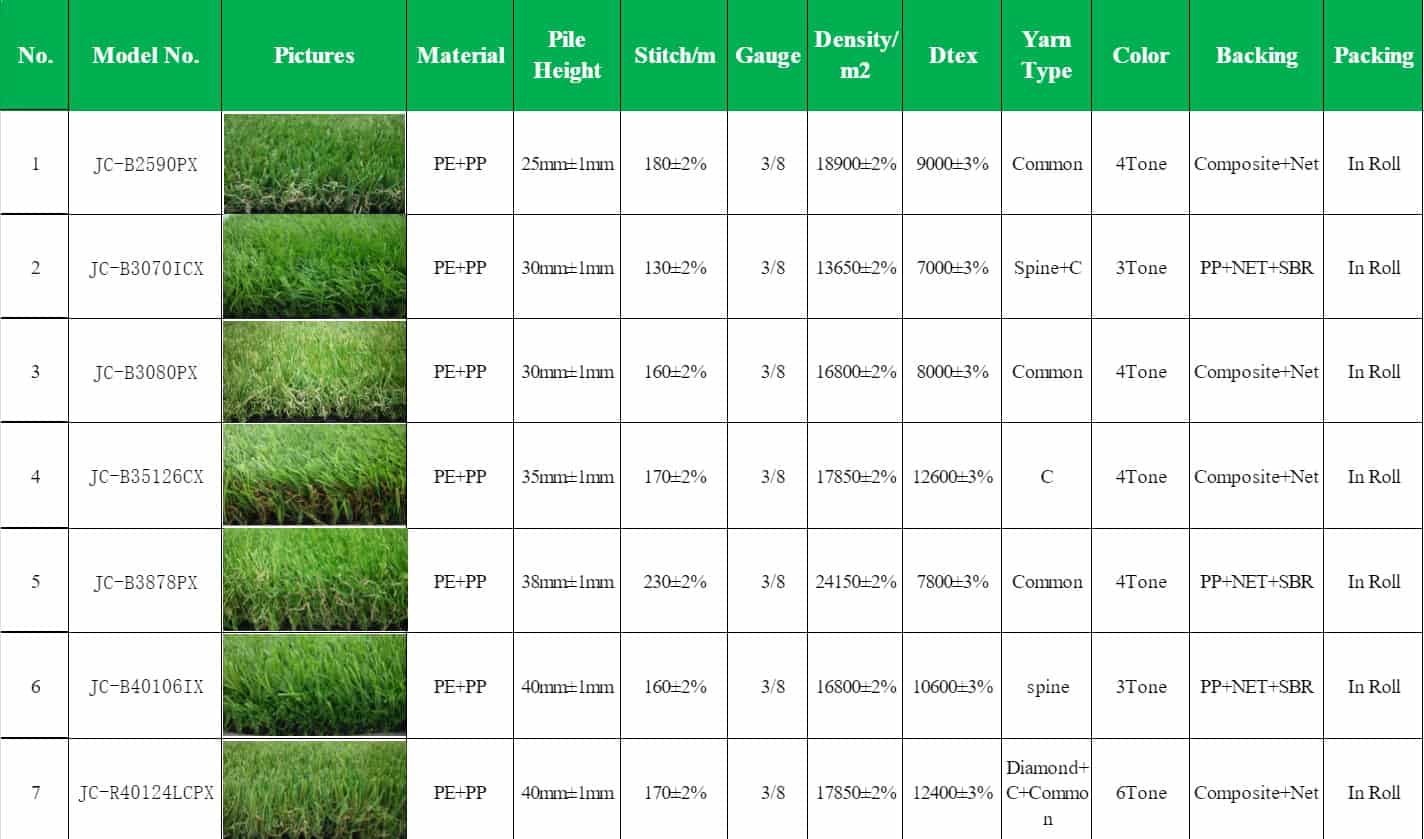Yes, you can! Both natural grass and artificial turf can be used for pickleball, but the playing experience is very different. The right choice depends on the type of grass and your goal — whether it’s casual fun or competitive play.
In this article, we explain how pickleball performs on natural grass and artificial turf, compare their pros and cons, and offer practical advice on court setup, surface selection, and long-term maintenance. Whether you’re planning a backyard court or looking for a more professional solution, this guide will help you make an informed decision.
Playing Pickleball on Natural Grass
It is possible to play pickleball on natural grass, but the experience is different from a standard hard court. The bounce, speed, and feel underfoot are unique, and knowing these differences can help you adapt and enjoy the game more.
Advantages
Natural grass is softer underfoot, which means less impact on knees and ankles. This makes longer games more comfortable. The setting also feels more relaxed, making it well suited for casual matches with family or friends. The surface slows the ball slightly, giving beginners more time to react.
Drawbacks
It is difficult to keep natural grass perfectly even over time. Uneven ground or grass that is too long can cause the ball to bounce inconsistently. Grass can become slippery when wet, which raises the risk of falls. Frequent play can also wear down certain areas, requiring maintenance and repairs.
Practical Tips
To get a better playing experience on natural grass, consider the following:
- Keep the lawn trimmed and level to reduce bounce irregularities.
- Use outdoor pickleballs designed for grass to improve control and speed.
- Since the bounce is lower, move early and apply slightly more power when hitting.
- Avoid playing on wet grass to maintain good traction.
Natural grass works well for occasional recreational games. But if you need more consistent bounce and a faster pace, artificial turf or a dedicated court will be a better choice.
Playing Pickleball on Artificial Turf
Artificial turf provides a reliable and comfortable surface for pickleball. It delivers a game experience closer to a hard court while keeping the softer feel underfoot. For players who value consistency and low maintenance, it is a strong choice.
Benefits
Stable bounce, close to hard court standards
- Sports-grade artificial turf is built to keep the ball bounce predictable across the court. This allows rallies to flow smoothly and makes the game fair for both casual and competitive play.
All-weather use with quick drainage
- Quality turf systems have an effective drainage base. Rainwater clears quickly, so games can continue soon after wet conditions without the risk of muddy spots.
Low maintenance and long lifespan
- There is no need for mowing, watering, or reseeding. With basic cleaning and brushing, the surface remains in good condition for years, even under frequent use.
Customizable colors and reduced glare
- The surface can be produced in different colors to suit club or home design. Anti-glare fibers reduce sunlight reflection, helping players see the ball more clearly.
Joint-friendly and safer play
- Built-in cushioning absorbs impact, easing stress on knees and ankles. This helps reduce the risk of sports injuries, especially in longer matches or for older players.
Suitable Applications
Permanent backyard courts: Ideal for homeowners who want a long-term pickleball area that is always ready to play.
Community, club, and school facilities: Durable enough to handle high traffic from multiple users every day.
Multi-sport courts: Can be lined and used for tennis, padel, and pickleball, maximizing space and investment.
Practical Tips
- Choose turf specifically designed for sports use, with the right pile height and density for pickleball.
- Ensure the base is level, compacted, and well-drained before installation.
- If possible, have court lines integrated into the turf for long-term clarity.
- Use a regulation-height net and follow official court dimensions to maintain game standards.
Artificial turf combines the look of grass with the consistency of a professional court, making it a dependable choice for year-round pickleball.
Natural Grass vs. Artificial Turf for Pickleball
| Feature | Natural Grass | Artificial Turf (JCturf) |
| Ball Bounce | Unpredictable, lower height | Consistent, closer to hardcourt feel |
| Traction & Safety | Slippery when wet, uneven patches | Excellent grip, cushioned for joints |
| Weather Resistance | Affected by rain and mud | Fast drainage, playable soon after rain |
| Maintenance | Mowing, fertilizing, reseeding | Minimal — simple brushing & cleaning |
| Durability | Wears quickly in high-traffic areas | Designed for heavy sports use |
| Cost Over Time | Low initial cost, high upkeep | Higher initial cost, lower long-term cost |
Key takeaway: If you want a low-maintenance, safe, and consistent pickleball experience, JCturf sports-grade artificial turf is the better choice.
Building a Pickleball Court on Artificial Turf
Creating a pickleball court with artificial turf requires careful preparation to ensure consistent bounce, good traction, and long-term durability. A well-installed court will play smoothly in all seasons and need minimal upkeep.
Site Preparation
Start by selecting a flat area with enough space. The official court size is 20 feet wide and 44 feet long, which is the same for both singles and doubles. You’ll also need extra room around the edges for movement and safety.
Before installation, check the net height requirements. A regulation pickleball net is 36 inches high at the sidelines and 34 inches at the center. Make sure to plan for this when setting up your net system.
For the court boundaries, use weather-resistant paint or bright outdoor tape to ensure visibility. If you’re using artificial turf, having these lines integrated during production is ideal for long-term clarity and minimal maintenance.
Base and Drainage
Remove existing vegetation and level the ground. A solid, compacted base — often made from crushed stone — helps prevent movement and keeps the surface even. Install proper drainage to avoid puddles and make the court playable soon after rain.
Turf Installation
Choose low-pile sports turf designed for pickleball or multi-sport use. It should offer a balance between cushioning and firm support for the ball to bounce properly. Stretch the turf evenly and secure it tightly.
Net and Layout
Use a regulation-size net for the most accurate game play. Ensure your layout matches the standard dimensions, and double-check the line markings for proper alignment.
Practical Setup Tips for Turf or Grass Courts
- The court surface must be flat and well-drained to prevent erratic bounce and reduce injury risk.
- Keep grass short if you’re using natural turf; for artificial turf, low-pile density improves bounce and player stability.
- Place the court in a sunny location to help the surface stay dry and usable.
- Use a portable regulation net if flexibility is needed or if the court is shared with other sports.
Final Checks and Maintenance
Before using the court, walk the entire surface to confirm that everything is level and secure. Over time, simple brushing and cleaning are enough to keep the turf in good condition. Regular inspections of drainage and seams help maintain performance.
A well-prepared artificial turf court offers a reliable, safe surface that holds up well over time and supports consistent, enjoyable play.
Pickleball Court Success Starts with the Right Artificial Turf Manufacturer
Choosing the right surface is key to enjoying pickleball year-round, with consistent bounce, player comfort, and long-term durability. At JCturf, we specialize in designing and manufacturing artificial turf systems tailored for pickleball and multi-sport use. Our products are built for performance — from backyard courts to high-traffic club and school facilities.
As both a manufacturer and direct supplier, we offer full support from product selection to installation guidance. Our turf is engineered for sports use, with tested pile height, drainage capacity, and surface stability that help maintain safe and predictable play in all conditions.
If you’re planning to build or upgrade a pickleball court, we’re here to help. Contact us to learn more about our sports turf series, request a free consultation, or get a custom quote based on your space and needs.

